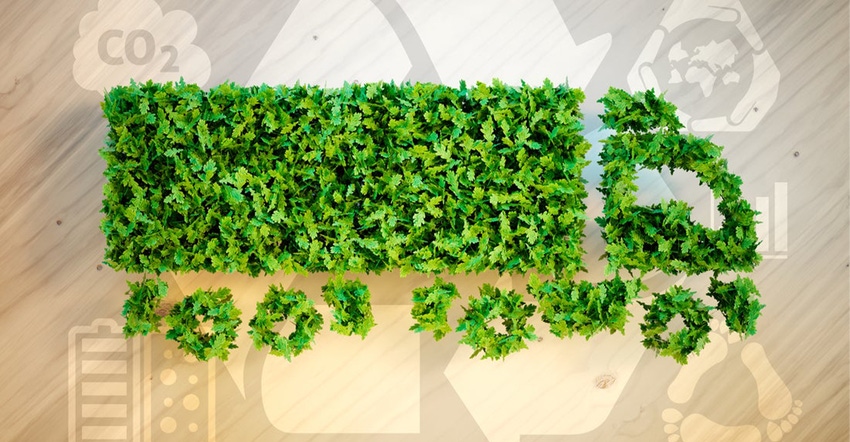
Climate technology developer and commercializer LanzaTech has been awarded $4.1M from the Department of Energy (DOE) for a project leveraging technology that uses carbon dioxide (CO2)-rich gas, such as from corn grain ethanol refining, to make chemicals and fuels. A major benefit is that the CO2 is captured before it is released to the atmosphere and put to beneficial use for multiple products. But a challenge is that this gas compound is energy poor, and using it requires a sustainable energy source, so LanzaTech couples it with renewable hydrogen from electricity, which breaks down the CO2 to make the products.
The Chicago, Ill.-based company also works with industrial off-gases; syngas generated from biomass (e.g., municipal solid waste); agricultural waste; and reformed biogas. But Freya Burton, chief sustainability and people officer LanzaTech, refers to this newest innovation as “the holy grail in that we can use CO2 directly as the carbon source for making everyday fuels, chemicals, and materials [in place of using oil and coal]. So, the very cause of the climate crisis (CO2) will help change the trajectory of this problem.”
The core technology involves gas fermentation, which is like traditional fermentation, but instead of yeast and sugar, carbon monoxide (CO) and CO2 are used as food for bacteria to produce alcohol.
“The fermentation piece of our technology is flexible, which enables us to take different gas streams and make different products, where other technologies typically focus on one gas stream, which has to be very pure, and they are more limited in the number of products they can make,” Burton explains.
Working with biological organisms is key to the ability to be flexible.
“Biology is good at taking chaos and creating order. So, we can take different feedstocks of mixed ratios, which do not have to be clean. And we can create different products,” Burton says.
Bacteria eats the gas, whether CO2 or others, and as it grows it makes ethanol and other chemicals.
LanzaTech has two commercial-scale plants in China that convert waste gas from steel mills into ethanol for transportation fuel blending. In this case, CO is captured and used that would otherwise be combusted and emitted as CO2.
Some ethanol is converted into aviation fuel, and that technology is being scaled in the U.S.
The ethanol has been used in household cleaners and made into surfactants for laundry detergents for London-based consumer goods company Unilever.
Chemical company BASF and fragrance manufacturer Coty are tapping into LanzaTech’s technology to make perfumes. And the company is working with lululemon to make sports apparel with recycled carbon fabric.
Partnering with LanzaTech in advancing the technology are Oak Ridge National Laboratory (ORNL), which is sponsored by DOE, and the University of Michigan.
ORNL’s role is to improve the efficiency of the microorganisms.
“We characterize proteins and metabolites in microbial samples that produce ethanol and other products. The microbes will produce these biofuels and other products at a certain rate; we need to make them do it faster, cheaper, and better to improve the ability to make the fuel or product,” says Tim Tschaplinski, ORNL section head in the Biosciences Division.
The lab team identifies blocks in the process and works to design around them to try and ensure carbon does not go to nonproductive pathways but rather is put to specific beneficial uses.
ORNL has been involved in other projects with LanzaTech to make biofuel using different microorganism platforms. Its interest is that the work informs its science, helping to advance decarbonized biorefinery processes across the energy sector and elsewhere.
“We can enable the establishment of a carbon-negative chemical production platform. We get a fundamental understanding of microbial metabolic processes. And we expand databases of metabolites in microbes and identify metabolic pathways that become bottlenecks, so we understand reactions better,” Tschaplinski says.
Scientists at the University of Michigan’s Department of Biological Chemistry are working to understand the mechanism of enzymes involved in the conversion of CO and CO2 to ethanol and other chemicals, including fuels.
The fermentation process as Freya explained uses CO2 as a building block to make ethanol and other chemicals. The organisms used in the fermentation contain the enzymes that catalyze the ethanol/chemical synthesis. The goal is to make the organisms more efficient in their use of CO and CO2 by modifying the enzymes involved in the process, says Stephen W. Ragsdale, professor, Department of Biological Chemistry, University of Michigan Medical School.
The funding for the newest work to scale CO2 coupled with hydrogen comes at a critical time when companies and government are searching for ways to reduce carbon emissions, Jennifer Holmgren, chief executive officer of LanzaTech said in a statement.
“The Department of Energy has been extremely supportive of innovation in carbon capture and circularity, and we are grateful for the DOE’s investment to get these technologies to scale,” she said.
The DOE award comes from the Advanced Research Projects Agency-Energy, which works to engineer conversion systems that produce fewer emissions than current fermentation processes used in biorefining.
“This development shows we can rethink how we see carbon. Today it’s considered the bad boy of the chemical world. But we see carbon refining as an opportunity to make many useful products. It’s about using it in the right way,” Burton says.
About the Author(s)
You May Also Like




